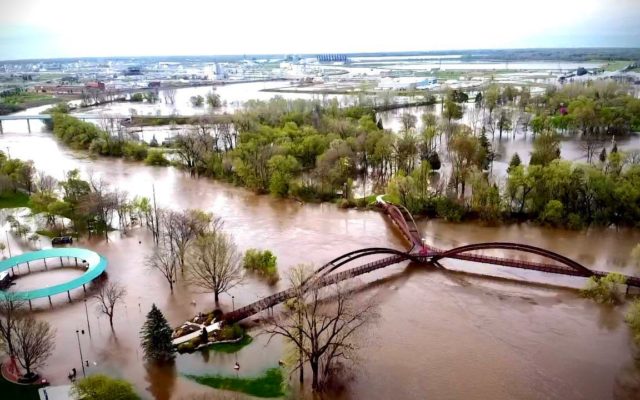President Trump Approves Major Disaster Declaration Following 500 Year Flood Event

President Donald Trump has approved a major disaster declaration for mid-Michigan counties affected by the flood of May 19.
At that time, Governor Gretchen Whitmer declared a state of emergency for the counties affected by the failures of the Edenville and Sanford dams following two days of heavy rains, which created a 500 year flood event and led to the evacuation of 11,000 people and hundreds of millions of dollars in damages to the area. The president’s approval of the declaration opens up federal funding for affected individuals in Arenac, Gladwin, Iosco, Midland and Saginaw counties. Assistance can include grants for temporary housing and home repairs, low-cost loans to cover uninsured property losses and other programs to help individuals and business owners recover from the effects of the disaster.
Federal funding also is available to state, tribal and eligible local governments and certain private nonprofit organizations on a cost-sharing basis for emergency work and the repair or replacement of facilities damaged by the severe storms and flooding in those counties. Funding is also available on a cost-sharing basis for hazard mitigation measures statewide.
FEDERAL AID PROGRAMS FOR THE STATE OF MICHIGAN
Following is a summary of key federal disaster aid programs that can be made available as needed and warranted under President Donald J. Trump’s disaster declaration issued for the state of Michigan.
Assistance for Affected Individuals and Families Can Include as Required:
- Rental payments for temporary housing for those whose homes are unlivable. Initial assistance may be provided for up to three months for homeowners and at least one month for renters. Assistance may be extended if requested after the initial period based on a review of individual applicant requirements. (Source: FEMA funded and administered.
- Grants for home repairs and replacement of essential household items not covered by insurance to make damaged dwellings safe, sanitary and functional. (Source: FEMA funded and administered)
- Grants to replace personal property and help meet medical, dental, funeral, transportation and other serious disaster-related needs not covered by insurance or other federal, state and charitable aid programs. (Source: FEMA funded at 75 percent of total eligible costs; 25 percent funded by the state)
- Unemployment payments up to 26 weeks for workers who temporarily lost jobs because of the disaster and who do not qualify for state benefits, such as self-employed individuals. (Source: FEMA funded; state administered)
- Low-interest loans to cover residential losses not fully compensated by insurance. Loans available up to $200,000 for primary residence; $40,000 for personal property, including renter losses. Loans available up to $2 million for business property losses not fully compensated by insurance. (Source: U.S. Small Business Administration)
- Loans up to $2 million for small businesses, small agricultural cooperatives and most private, non-profit organizations of all sizes that have suffered disaster-related cash flow problems and need funds for working capital to recover from the disaster’s adverse economic impact. This loan in combination with a property loss loan cannot exceed a total of $2 million. (Source: U.S. Small Business Administration)
- Loans up to $500,000 for farmers, ranchers and aquaculture operators to cover production and property losses, excluding primary residence. (Source: Farm Service Agency, U.S. Dept. of Agriculture)
- Other relief programs: Crisis counseling for those traumatized by the disaster; income tax assistance for filing casualty losses; advisory assistance for legal, veterans’ benefits and social security matters.
How to Apply for Assistance:
Individuals and business owners who sustained losses in the designated area can begin applying for assistance by registering online at www.DisasterAssistance.gov or by calling 1-800-621- FEMA (3362) or 1-800-462-7585 TTY. The toll-free telephone numbers will operate from 7 a.m. to 9 p.m. daily until further notice.
Assistance for the State, Tribal, and Affected Local Governments Can Include as Required:
- Payment of not less than 75 percent of the eligible costs for debris removal and emergency protective measures taken to save lives and protect property and public health. Emergency protective measures (Categories A and B), including direct federal assistance, is available to state and local governments on a cost-sharing basis. (Source: FEMA funded, state administered)
- Payment of not more than 75 percent of the approved costs for hazard mitigation projects undertaken by state, tribal, and eligible local governments to prevent or reduce long-term risk to life and property from natural or technological disasters. (Source: FEMA funded, state administered)
How to Apply for Assistance:
Application procedures for state, tribal, and local governments will be explained at a series of applicant briefings with locations to be announced in the affected area by recovery officials. Approved public repair projects are paid through the state from funding provided by FEMA and other participating federal agencies.



